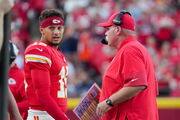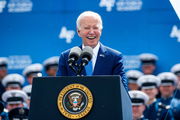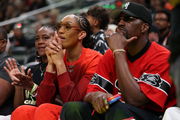
Imago

Imago
Picture this: you’re a track star, heart pounding after a blistering race, and if you missed the ‘cash meet’ where you’re handed a stack of cash right after your shower, you have to wait for months for your prize money. That’s the world track and field used to live in, but today? Athletes are navigating a whole new game. Modern events like Athlos and Grand Slam Track are dangling massive prize purses, think $60,000 for a single win at Athlos.
Watch What’s Trending Now!
“You’re lucky”, Gatlin almost making a plea to modern celebrity athletes. Because of the sponsorship cash, like Noah Lyles’ multi-year Adidas deal, reportedly worth millions, locking him in through the 2028 Olympics.
But here’s the catch: while the money’s bigger, the wait to get it can feel like an eternity. Athletes today aren’t used to twiddling their thumbs for months to see their earnings. With these high-stakes meets and lucrative endorsements, the sport’s financial landscape is glitzier but trickier. So, how did we get here from the days of the past?
ADVERTISEMENT

ADVERTISEMENT
Well, Justin Gatlin, the Olympic gold medalist and track legend, spilled the tea on the Ready Set Go podcast. He took us back to the era of “cash meets,” where sprinters had to wait for six to nine months to get their prize money. “You lucky if you got paid in three months. That’s fast,” Gatlin said, describing today’s fast cash delivery system.
Back in the day, that time used to stretch to infinity. “You looking at six months, maybe even nine months.” In his prime, it was different; waiting to get your prize money was inevitable. He painted a vivid picture: “This day and age is so different. You know what I mean? So they’re not used to waiting for that cash”, suggesting the three-month wait is nothing compared to the old days. Perhaps Noah Lyles and other athletes do have it better in some sense.
ADVERTISEMENT
But what exactly were cash meets?
Track and Field’s ‘cash meet’ days recalled by Justin Gatlin
Imagine sprinting your heart out, crossing the finish line, and then, bam! heading to a room where cash is stacked high, ready for you to grab. That’s the track and field world Justin Gatlin reminisced about on the Ready Set Go podcast, painting a picture of the sport’s wild, cash-fueled past. Back in the day, meets were a different beast. Gatlin described it vividly: “You’d hurry back to the room after running, take your shower, and then creep down to where the cash room was… They got money stacked up everywhere. Real talk… Everybody, they count it like this. All right, this your money right here. This your money.”
ADVERTISEMENT
Athletes walked away with their prize money in hand, grinning, ready to hit the bar for celebratory drinks. That payout vibe made the circuit feel alive, electric, like nothing else. How did those cash meets shape the sport’s soul?
Gatlin’s story takes us back to a time when track was raw and immediate. Those cash rooms weren’t just about money; they were about camaraderie, a shared thrill. “That’s when the circuit was really the circuit,” he said. Today’s meets, with there is disconnect, feel sterile by comparison. What made those cash meets so special, and can track ever recapture that magic?
Top Stories
Andy Reid Announces Patrick Mahomes’ Injury Diagnosis as Chiefs HC Doesn’t Hold Back After Playoffs Elimination

Former US President Joe Biden Keeps a Clear Demand to Eagles Owner Amid Jalen Hurts’ Struggles

Cowboys Star Risks Severe Punishment Over Justin Jefferson Incident vs Vikings

A’ja Wilson, Bam Adebayo Issue Strong Statement Against Rachel Nichols’ Question About Couple’s Privacy

NFL Announces Punishment for Shedeur Sanders Incident

Diego Pavia Issues Public Statement After Heisman Controversy Triggers Strong Reaction

ADVERTISEMENT
ADVERTISEMENT
ADVERTISEMENT

